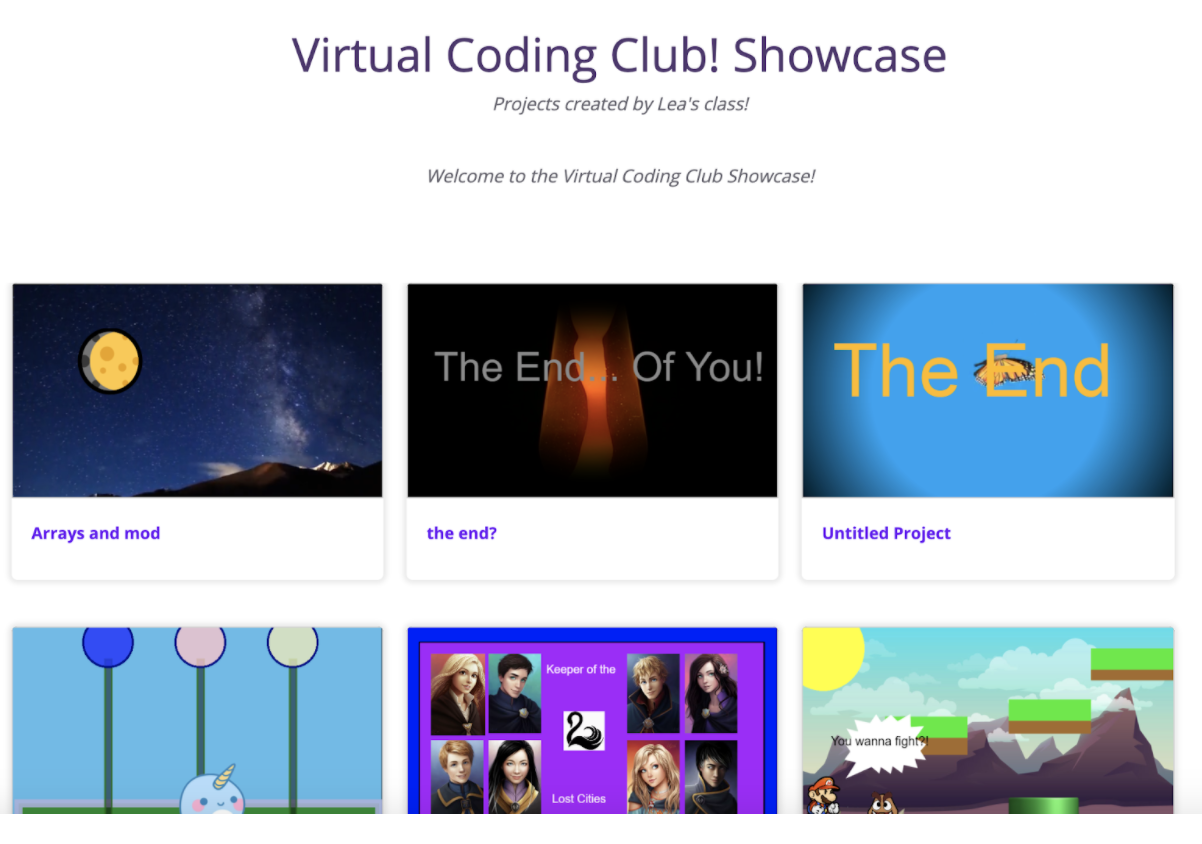With many schools going for remote or hybrid learning this fall, we’ve put together our list of the top 8 things to know when you’re teaching computer science remotely. We hope they’re helpful to you as you start this school-year, however you’re starting it.
1. Elect a VJ
Highly recommend having a “VJ”. This co-teacher or classroom leader arrives 15 mins early, lets people in, answers chat questions, logs the chat, and follows up on additional questions via email after the session.
2. Give students multiple ways to learn
Try teaching through live videos, record yourself going through a PowerPoint presentation, or maybe screen share and go through one of Vidcode’s tutorials on your own. You can also try to incorporate a range of media by illustrating important concepts in a variety of formats. Include pictures, graphs, handwritten summaries, and coding.
3. Incorporate milestones to keep students motivated
In a virtual environment, it is especially important to keep students engaged and motivated. Incorporating milestones is a great solution. You can use the quizzes built into Vidcode as goals for students. You could also create badges to award students once they have completed certain tutorials and units. Another idea is keeping a spreadsheet of each students’ progress and turning that into a graph for an even stronger visual.
4. Students supporting students
If a student has gotten ahead of the class, elect them to be the teacher’s assistant and field all questions from other students who are in earlier tutorials.
5. Give students a place to share thoughts and projects
A commonly perceived disadvantage to virtual learning is the lack of community and difficulty for student-to-student interaction. However, you can easily address this by emphasizing the feeling of community. Encourage students to share their projects and ask their questions live. Maybe try separating your students into smaller groups to tackle more difficult problems. The goal is to cultivate a place for your students to share and comment on work both in and out of class.
6. Leave time for exploration outside of class
Assign homework and check on students progress throughout the week. It can be the next tutorial in the course or it could be to ‘remix’ another students’ project.
7. Encourage creativity
Give an initial prompt for projects, but leave enough room for students to be creative on Vidcode. Students will have the opportunity to add their own interests and media to their projects. An example is assigning the “Code a Meme” project but encouraging students to show a “Learning from Home Tip”. In response to this assignment, students made projects incorporating Minecraft, sports, and pugs!
8. Celebrate student work
Create a virtual showcase to showcase students’ favorite projects. Make sure to dedicate time to celebrate each student’s accomplishments with time for show and tell. It provides a nice change of pace from normal class time and creates a bit of fun for the students. Encourage brief presentations in class and maybe even host forums afterward!
Interested in teaching with Vidcode in a virtual classroom?
Check out our Getting Started Guide. Vidcode has dozens of courses covering computer science, javaScript and hardware that can be taught effectively in a virtual classroom. You can start assigning classes to unlimited students for free by creating an account.
Encourage your students to use their laptops, Chromebooks, or tablets to join the class on Vidcode. You can easily keep track of your students’ progress with exciting projects that teach the basic concepts of JavaScript.
“When I think about digital equity, I think about ensuring that everyone has equal access and opportunity. That they have knowledge about what technology resources are available to them and the possibilities that they can achieve through technology, whether it’s creating or consuming. Access doesn’t necessarily mean handing students devices. It is more about what they can create with that technology.”
Patricia J. Brown, technology specialist for the Ladue School District in Missouri
What’s next?
Thanks for checking out our 8 tip for teaching computer science remotely. Next up, check out our Getting Started Guide & create a free educator account.







